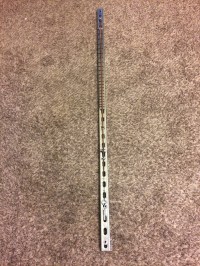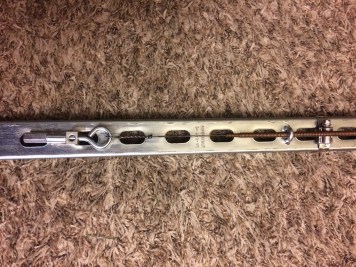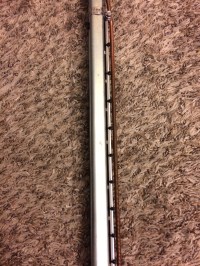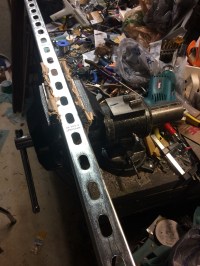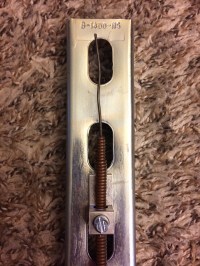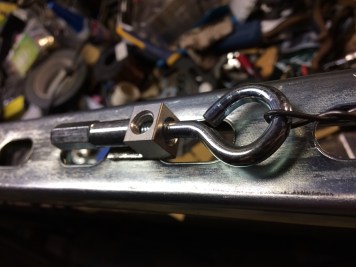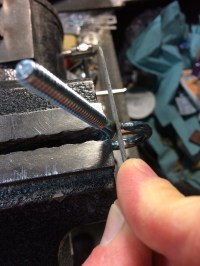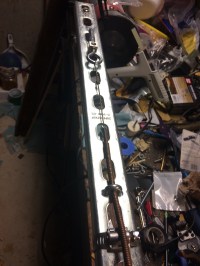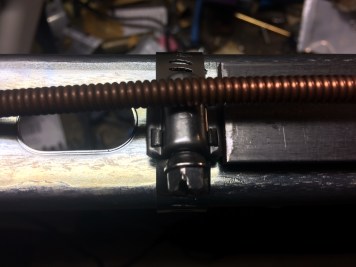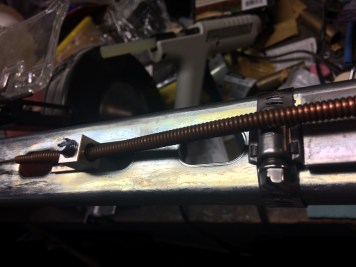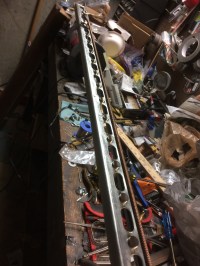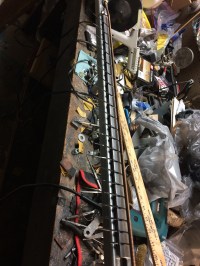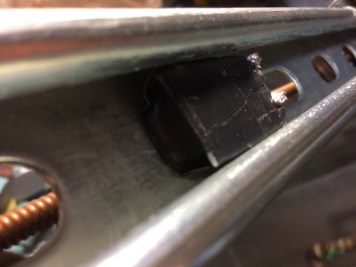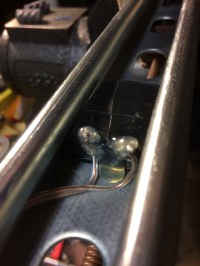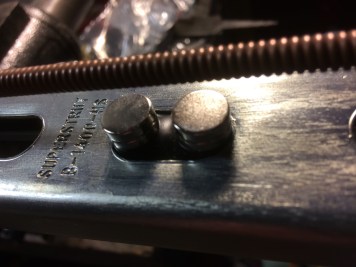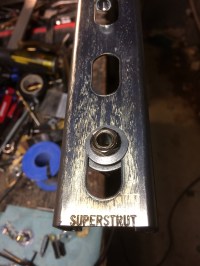I completed this prototype back in November 2015. It was a really cool project, but I just got around to writing up the build notes. The first thing I had to figure out was how to rip the bat in half. I didn’t have a table saw or bandsaw—just a circular saw and chop saw—so I decided to make a box that would almost perfectly fit the baseball bat. Then, I used a square to center all of the parts of the bat parallel to the sides of the box. To achieve this, I used different thicknesses of scrap wood to shim the bat into a centered position.
Once the bat was centered, I used a square to mark the cutline, which was slightly off center to allow for the best bat depth to fretboard width ratio—I wanted to retain as much material as possible to add strength, but I still needed enough fretboard width for three strings. I found my measurement and then set the circular saw guide relative to one side of the box.




I placed the box on the ground and up against the sidewalk. The box is much longer than the bat to allow extra room for the circular saw to drop in and begin a straight run toward the end of the bat. The saw must run through at a slow even pace, straight through the end block to complete the cut. The bat moved a bit, as the saw cut through its length. This resulted in a less than flat surface that required a bit of planing. I placed the surface with a hand planer until a level sat flat against the surface. I sanded the cut surface with sandpaper, but left the outer part of the bat untouched.




I filed a 3/8″ groove 24-3/4″ from the nut location and then cut two brass bolts, placing one in the bridge position and filing the other down to half thickness for the nut.
Pickup and 1/4″ Jack:



I purchased a second 1-1/4″ spade bit and sawed off the center point tip, so that the bottom would be flat and less likely to penetrate the back side of the bat. The pickup hole was started with the old bit with the tip and completed with the new bit without the tip. I installed a JSA Nd144 Electromagnetic Cigar Box Guitar Pickup and planned to wire it straight to the jack. My biggest concern was that I would drill through the back of the bat, so I was careful to measure and drill small bits at a time.



The endpin jack was too big to fit at the end of the bat as a circle, so I ground it down to more of a triangle, leaving the holes. The hole for the jack and wire was drill straight through to the pickup hole with a long 1/2″ bit. The jack fit well, but had to be bent a bit on the bottom to conform to the curve of the bat—a few brass screws held it in place nicely.
Tuners:



This was the first application of my Simple Tuners, as I created them for this particular project. Given that I wanted to keep a clean baseball bat profile at the back of the guitar, standard tuners would not work, so I came up with these tuners that attached to the front surface.
Headstock:

I found this old bottle opener and it fit perfectly on the headstock, so I fastened it down and then installed two more screws to set the height. I filed three notches to hold the strings and then added a string tensioner, made of a brass bolt and two small eye-screws and it was ready to go.
Check out this quick and dirty video:
Thanks,
































